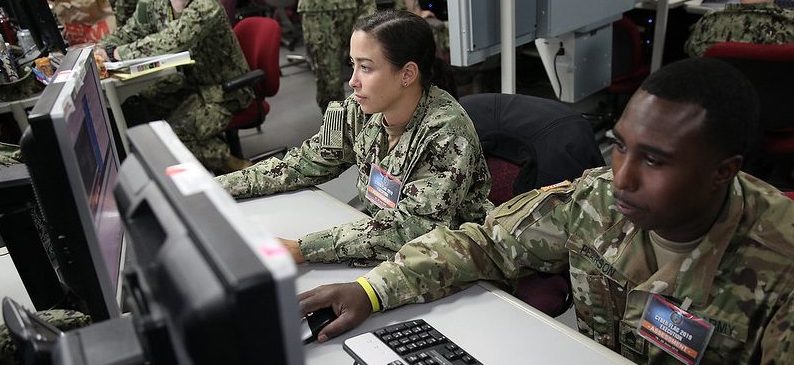Is the Defense Department poised, at long last, to crack the code on enterprise resource planning (ERP) software?
ERP emerged in the early 1990s as a way to integrate and manage core enterprise business applications, such as finance, human capital and logistics. Unfortunately, the systems typically have required significant customization to meet the needs of a given organization – especially one as complex as a military service or defense agency.
As a result, ERP systems “have missed the mark on what they need to deliver,” said Kevin Sampels, Vice President for Strategic Growth and Client Solutions at Frontier Technology Inc., an IT services company serving defense and civil agencies and other customers.
In particular, the systems “don’t have the ability to plan, design and execute with real-time responsiveness,” Sampels said. “The result has been systems that lack the agility to make changes and adapt to a crisis.”
But a new approach has emerged: composable ERP.
On the recent GovLoop online training, DoD’s Software Enterprise Needs to Become Composable, a panel of defense and technology experts discussed why this concept is so important and what it might mean for DoD and other organizations in the years ahead.
Composable ERP Defined
In the past, ERPs were built as monolithic systems providing a wide range of capabilities. A given system would be strong in some areas and weak in others, but organizations had to take the good with the bad. It’s like buying an album: You might not like all of the songs, but you have to pay for the whole thing.
In contrast, composable ERP is more like a playlist, said Mark Failor, Senior Director, Digital Transformation for Aerospace and Defense at Infor, an enterprise software company. “You grab the songs you need, rather than the whole album.”
The idea is to have an underlying platform (the ERP equivalent of iTunes) with which to integrate enterprise business capabilities as needed. That underlying platform makes it possible to swap out those components when new capabilities emerge. That platform also provides the ability to integrate data across the different components.
Think Data, Not ERP
The integration of data is key. In many traditional ERP systems, potentially valuable data is scattered across various systems and cannot be integrated in any meaningful way.
For DoD, that’s a big problem when it comes to logistics, said Rear Admiral Thomas Moreau, Director of the Supply, Ordnance and Logistics Operations Division, N41, Office of the Chief of Naval Operations.
“Coming out of multiple war games in recent months, I would say that if you are not in the data world, you are so far behind,” Moreau said. “We really see logistics data as a commodity. I talk about it in the same way I talk about fuel or ordnance.”
It’s a matter of “decision dominance,” he said, in which data provides crucial insights into operations that enable commanders to make quicker, better decisions.
The IoT Connection
One way to build composable systems is to leverage the Internet of Things (IoT), said Maj. General (Ret.) H. Brent Baker Sr., Vice President, Global Federal Aerospace and Defense, at PTC, which specializes in digital transformation solutions.
IoT devices can provide an efficient way to make connections between different systems and enable that integration of data. That makes it possible for organizations to pull together solutions quickly and begin getting insights, rather than waiting multiple years for a new monolithic system.
“You can dream big, start small and scale fast,” Baker said. That is, an organization can begin by identifying a few areas where they can leverage this connectivity, then expand as they develop new capabilities.
A New Way of Doing Business
But this same approach can and should be taken with all enterprise software, panelists said.
“It’s not just about ERP – it’s about the composable enterprise,” said Failor. Rather than managing major IT projects, teams can focus on delivering specific products or capabilities that can be plugged into the underlying infrastructure, often by reusing or building upon products developed by other teams.
As with any change in how agencies operate, the introduction of composable ERP needs to be undertaken with care, said Brig. General John (J.C.) Millard (Ret.), Senior Vice President of Defense Strategy at Telesto Group, a consulting firm in business transformation and other areas. That means implementing a change management program that gets both senior leadership and the workforce on board.
Moreau agreed. “Getting out of legacy is hard,” he said, with resistance coming from both a sense of fear and a feeling of ownership. “But at the end of the day, we have got to separate ourselves from systems that are 30 or 40 years old.”
This online training was brought to you by:






Leave a Reply
You must be logged in to post a comment.